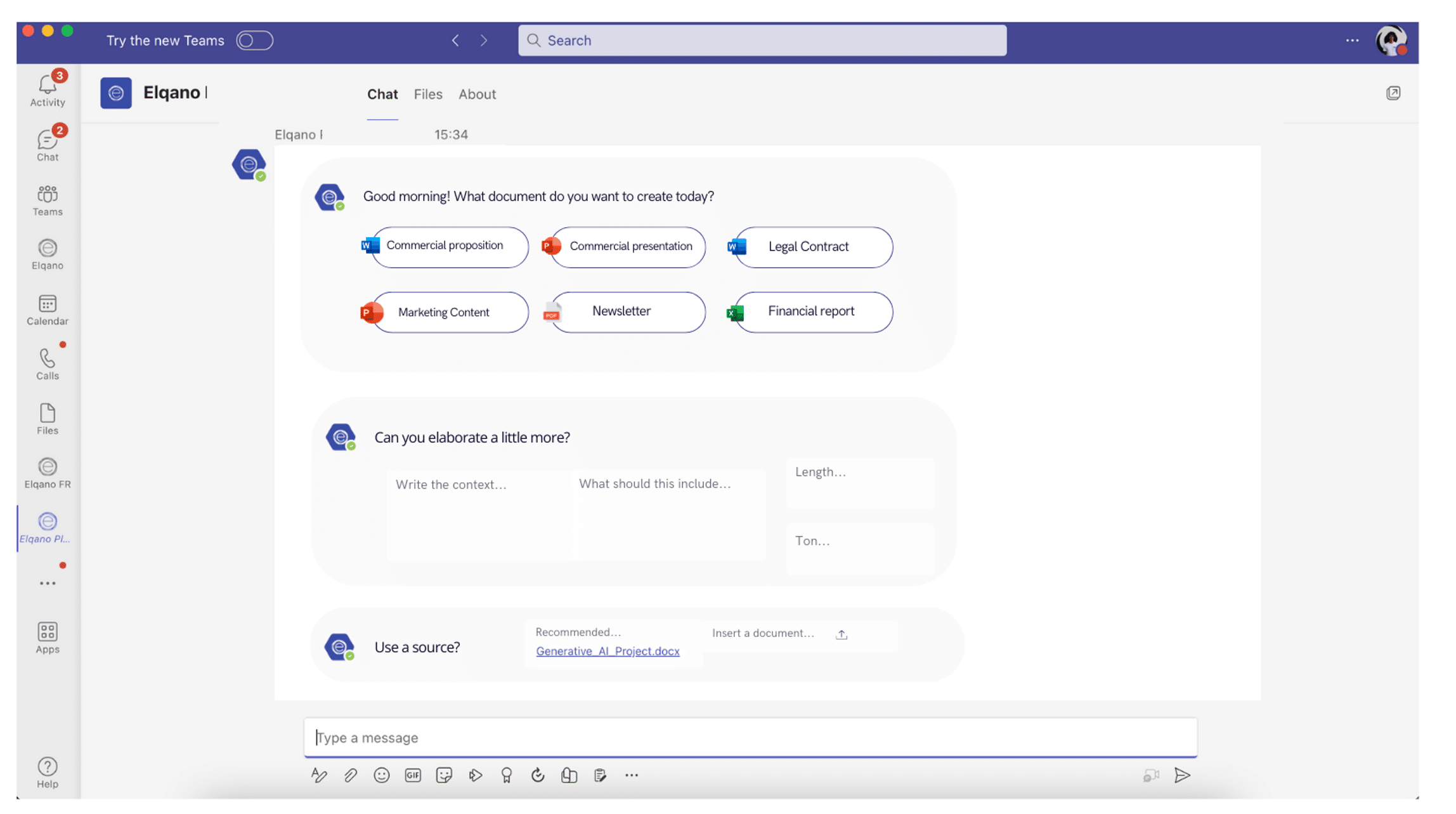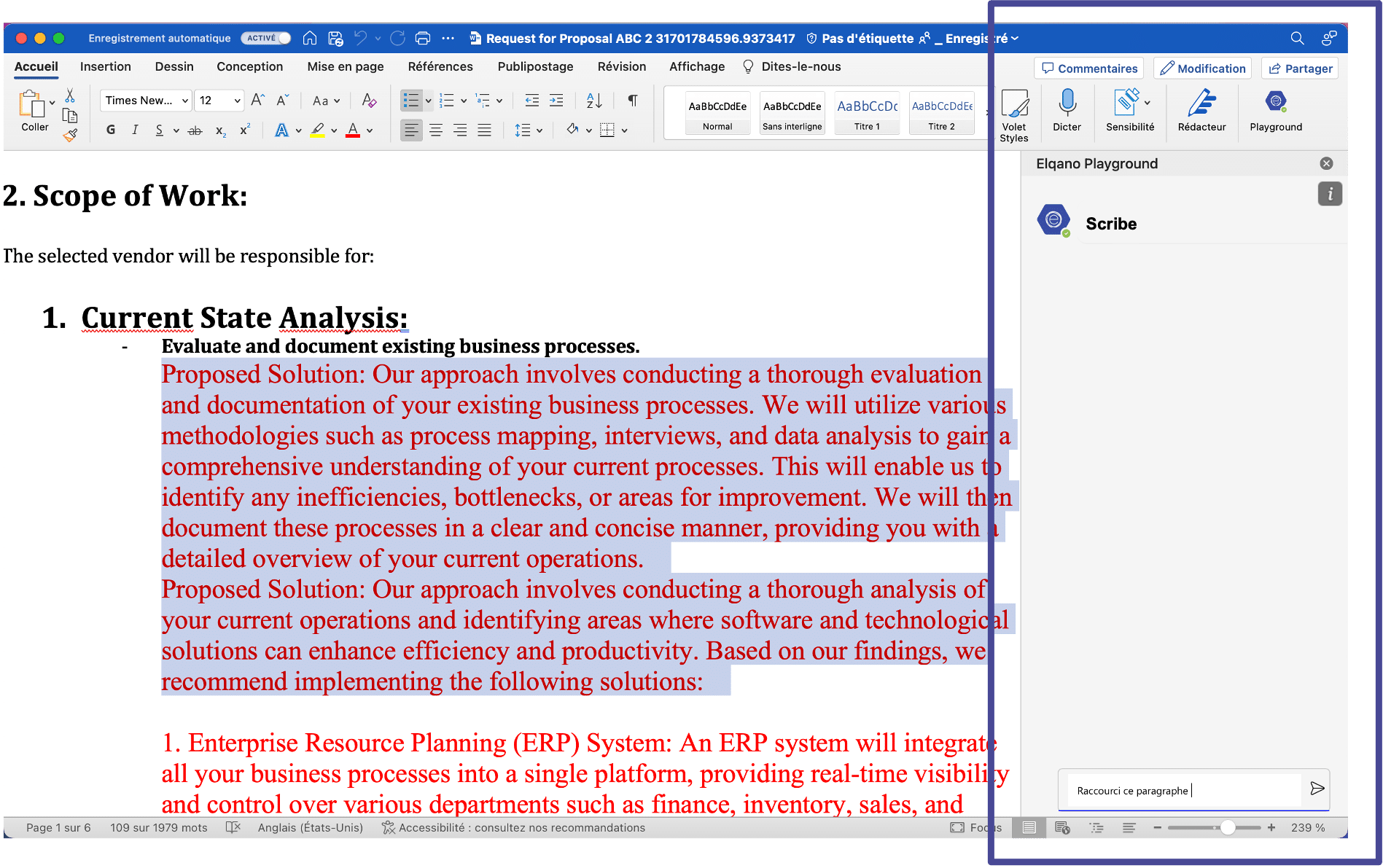Scribe
Scribe enables the creation of Word and PowerPoint documents using generative artificial intelligence.
Our system uses predefined templates and various concrete business cases, enriched by AI, to generate similar, tailored, and relevant content.
This approach enables us to offer customized solutions that address needs ranging from tender responses, writing commercial proposals, to updating project presentations.

Generate a draft document from internal data, following the company's best practices
- A user-friendly interface to assist users in formulating their queries.
- Generative AI utilizes internal databases.

Interact with Scribe to edit the document
An assistant integrated into documents to make real-time edits.
How does it work?

Your data is safe
FAQ
What is knowledge management?
Knowledge management can be defined as the process of identifying, capturing, storing, disseminating and using employee knowledge within a company. More precisely, the aim of knowledge management is to optimize the use of employees’ knowledge to improve overall company performance.
Knowledge management is a powerful tool that also helps create a corporate culture conducive to employee training, communication and collaboration. Knowledge management goes hand in hand with employee knowledge management.
Knowledge management, the answer to certain challenges?
The implementation of knowledge management responds to a number of challenges facing companies.
The loss of knowledge, particularly when employees leave the company or retire. They take their acquired knowledge with them. Knowledge management helps combat this phenomenon by storing data and making it available to current and future employees.
Fragmentation of knowledge: data can easily be dispersed throughout the company via different departments, IT or non-IT systems, or the many different content formats. Knowledge management enables internal information to be optimally organized.
The need to make informed decisions: knowledge management gives employees access to relevant information, enabling them to make informed decisions.
Competition: companies need to be able to respond to the changing needs of their customers. Knowledge management ensures direct access to the data needed to improve the products and services sold.
How do you apply knowledge management?
There are several steps to implementing knowledge management in a company.
Knowledge needs assessment: it’s important to understand your company’s knowledge needs, so that you can implement the right management strategies.
Identifying and capturing the information available in your company: it’s important to identify existing sources of information and make them accessible to all.
Storing and organizing knowledge: the aim is to store your employees’ knowledge in an organized way, using content management tools to facilitate access and retrieval.
Sharing and using knowledge: it is essential to promote collaboration and communication within your company, so that existing knowledge can be shared and used.
Establishing a corporate culture conducive to training and learning.
What is the link between management and knowledge management?
Knowledge management is a strategy that forms part of a company’s overall management framework. It is an approach that aims to optimize the management, dissemination and use of knowledge within the company. The aim is to maximize added value for the company by making effective use of internal knowledge.
Knowledge management involves putting in place methodologies, processes and tools to ensure that knowledge is collected, stored, disseminated and made available within the company. It also requires the active participation of employees and a corporate culture that encourages collaboration and knowledge sharing.
In short, knowledge management is a key element in optimizing corporate performance, by ensuring that internal knowledge is used effectively and consistently to achieve the company’s objectives.
